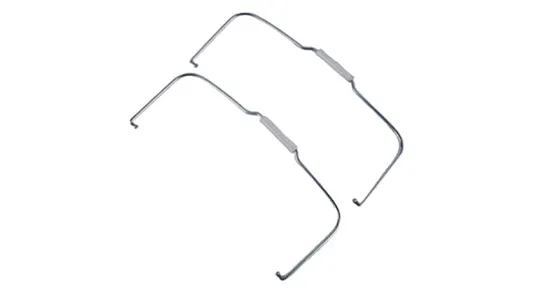-
 Phone:
Phone: -
 Email:
Email:

Understanding the Uses and Benefits of Rebar Tie Wire in Construction Projects
Understanding Rebar Tie Wire An Essential Tool for Construction
In the construction industry, reliability and structural integrity are paramount. One often overlooked yet critical component that plays a vital role in reinforcement is rebar tie wire. This simple yet effective tool ensures that reinforced steel bars (rebar) are securely held in place, allowing for the creation of robust and long-lasting structures. In this article, we will explore the significance of rebar tie wire, its applications, and its various types available in the market.
What is Rebar Tie Wire?
Rebar tie wire is a type of wire specifically designed for tying together rebar in concrete construction. It is typically made from high-strength steel and is available in various gauges, depending on the specific requirements of a project. The wire is used to connect rebars at intersections, ensuring that the structure maintains its shape and strength during the pouring of concrete and throughout its lifespan.
Importance of Rebar Tie Wire
1. Structural Stability The primary function of rebar tie wire is to secure steel bars together, which ensures that they do not shift out of place when concrete is poured. This stability is crucial as it allows the concrete to support loads effectively, enhancing the overall integrity of the structure.
2. Cost-Effective Solution Tying rebar with the appropriate tie wire is a cost-effective method to enhance construction durability. The cost of tie wire is relatively low compared to the potential expenses associated with structural failures or repairs caused by inadequate reinforcement.
3. Ease of Use Rebar tie wire is designed for easy application. Construction workers can quickly twist the wire around the intersecting bars, facilitating efficient assembly. This ease of use contributes to faster project completion times without compromising safety.
4. Versatility Rebar tie wire can be used in various construction applications, from residential buildings to large-scale infrastructure projects. Whether it’s for foundations, walls, or bridges, the versatility of tie wire makes it an indispensable tool in the construction industry.
rebar tie wire

Types of Rebar Tie Wire
Rebar tie wire comes in different types and grades, each suited to particular needs
1. Annealed Wire This type of wire is softer and more flexible, allowing for easy tying and bending. It is commonly used for general-purpose applications and offers a good balance of strength and ease of use.
2. Galvanized Wire Coated with zinc, galvanized tie wire provides extra protection against rust and corrosion. This makes it ideal for outdoor or high-moisture environments, where exposure to the elements could compromise the integrity of the rebar over time.
3. Stainless Steel Wire For projects that require maximum resistance to corrosion, stainless steel tie wire is an excellent choice. It is often used in marine constructions and other environments where exposure to harsh chemicals or saltwater is a concern.
4. Black Wire This is uncoated wire that is commonly used in most applications. While it lacks the corrosion resistance of galvanized or stainless options, it is often chosen for its affordability and satisfactory performance in many standard conditions.
Conclusion
In summary, rebar tie wire may seem like a small component in the grand scheme of construction, but its role is undeniably significant. By ensuring the stability and integrity of rebar placements, tie wire contributes greatly to the strength and durability of concrete structures. As construction projects continue to evolve, the demand for reliable reinforcement methods will only grow, making rebar tie wire an essential product in the toolbox of every contractor and builder. Understanding its applications and varieties can help in choosing the right type for any job, ultimately leading to safer and more reliable buildings.
-
Wire Mesh for Every Need: A Practical SolutionNewsJul.25,2025
-
Steel Fences: Durable, Secure, and Stylish OptionsNewsJul.25,2025
-
Roll Top Fencing: A Smart Solution for Safety and SecurityNewsJul.25,2025
-
Cattle Farm Fencing Solutions for Maximum SecurityNewsJul.25,2025
-
Affordable Iron Binding Wire SolutionsNewsJul.25,2025
-
Affordable Galvanized Wire SolutionsNewsJul.25,2025
-
Wire Hanger Recycling IdeasNewsJul.25,2025








